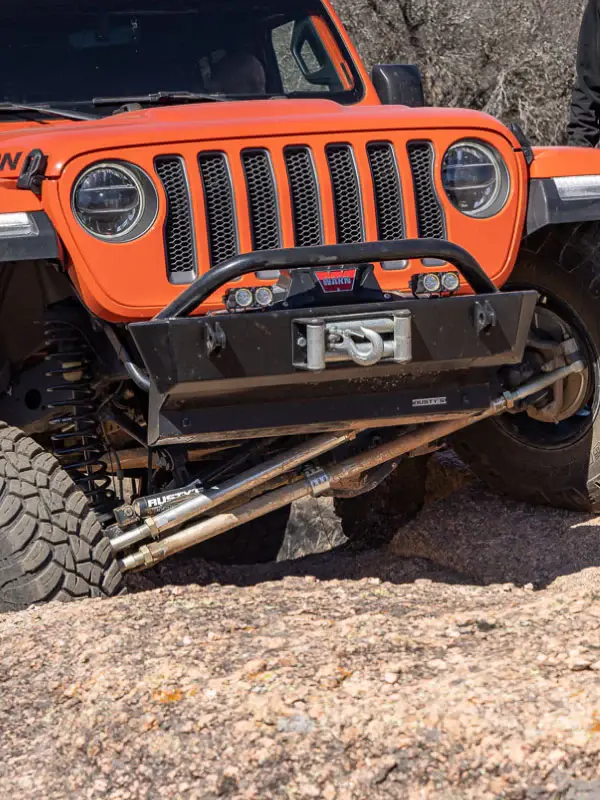Jeep XJ OEM Suspension Components: Factory Specifications and Replacement Intervals
- rustysoffroad
- Sep 12
- 4 min read

The Jeep Cherokee XJ earned its legendary status not just from its boxy design and off-road capability, but also from a suspension system that balanced comfort with rugged performance. Like any rig that’s been on the road for decades, the XJ’s suspension components eventually wear down. Knowing the factory specifications and when to replace critical parts is essential for safety, drivability, and trail performance. At Rusty’s Off-Road, we’ve spent decades building, testing, and upgrading suspension systems for Jeeps. That experience gives us a unique perspective on how to maintain OEM setups and when to swap in stronger replacements.
Understanding OEM Jeep Suspension Specs
From the factory, the XJ came with a simple yet effective suspension: coil springs up front and leaf springs in the rear. This setup was engineered to give a smooth ride on pavement while still holding its own on dirt roads and light trails. Over time, however, even the most durable OEM Jeep parts reach their limits. Rubber bushings deteriorate, springs sag, and shocks lose their damping ability.
Maintaining factory specifications means keeping the ride height, alignment, and steering geometry within original tolerances. A stock XJ should sit at around 17–18 inches from the center of the hub to the bottom of the fender flare in the front and 17–17.5 inches in the rear. Any significant drop indicates worn-out springs or tired leaf packs.
Common Wear Points and Replacement Intervals
Suspension components don’t all wear out at the same pace, but regular inspection goes a long way toward preventing bigger problems.
Shocks and struts: Usually last 50,000–70,000 miles depending on use. If the Jeep feels bouncy or bottoms out easily, they’re done.
Coil and leaf springs: Often last over 100,000 miles, but sagging ride height is the giveaway they need replacement.
Bushings: Rubber bushings may last 8–10 years, but heavy off-road use shortens their life dramatically. Cracks or dry rot are signs they’re finished.
Ball joints and tie rod ends: Expect replacements every 75,000–100,000 miles for stock driving. Add larger tires and off-road abuse, and the interval shrinks.
At Rusty’s, we see many XJs come in with mixed levels of wear. Some rigs have fresh shocks but sagging leaf packs. Others have solid springs but rotted bushings. That’s why a thorough inspection is key before throwing money at parts.
OEM vs. Upgraded Components
Sticking with OEM Jeep parts keeps the ride close to how the engineers designed it. That’s a good call for daily drivers or restorations. But for off-roaders, OEM specs can feel limiting. Many drivers eventually move to stronger springs, heavy-duty control arms, and beefier shocks.
A good middle ground is to replace worn-out OEM components with upgraded equivalents that still keep stock ride height. That way, you get durability without changing the Jeep’s geometry. For those itching to go bigger, a lift kit is the next step.
Lift Kits and Suspension Geometry
Speaking of upgrades, a Jeep Gladiator lift kit illustrates how modern Jeep engineering has evolved. Just like the Gladiator benefits from precise lift solutions, the XJ requires careful attention when raising ride height. Even a modest two-inch lift changes caster angles and steering feel. That’s why upgraded control arms, track bars, and stabilizers are often paired with lift kits. The same philosophy applies whether you’re upgrading a Gladiator or breathing new life into an older Cherokee.
Reading Suspension Layouts
For many Jeep owners, diagrams help make sense of what connects where. A Jeep Wrangler suspension parts diagram can be useful for XJ owners too, since both models share a lot of design principles. While the Wrangler runs coil springs in both front and rear, the layout of bushings, links, and steering components offers insight into how Jeep engineered stability. Understanding how each part ties into the system makes it easier to spot wear and plan replacements.
Protection Matters
Even if you stick to factory ride height, protecting suspension and driveline components is a smart move. Jeep XJ skid plates guard the undercarriage from rocks, stumps, and trail debris. Transmission pans, control arms, and differential housings all benefit from extra armor. Think of it as a way to extend the life of your OEM parts while prepping for bigger upgrades down the road.
Rusty’s Off-Road Expertise
At Rusty’s, we know Jeeps inside and out. For nearly five decades, we’ve been designing, building, and testing parts that outperform stock components without breaking the bank. Whether you’re looking for OEM replacement parts, heavy-duty upgrades, or a full suspension overhaul, our products are “Trail Tested Tough.” Every prototype sees real-world abuse before it’s ever offered to customers. That means peace of mind whether your XJ is a daily driver, a weekend warrior, or a full-blown crawler.
FAQs
Q1: Can I mix OEM Jeep parts with aftermarket upgrades?
Yes, many owners replace some components with OEM and others with heavy-duty parts, depending on their driving style.
Q2: How often should I check suspension components on my XJ?
A quick inspection every oil change and a full check at least once a year is ideal.
Q3: Do I need skid plates if I only drive on the street?
Not necessarily, but skid plates can still protect from curbs, debris, and unexpected hazards.
Click here to read more




Comments